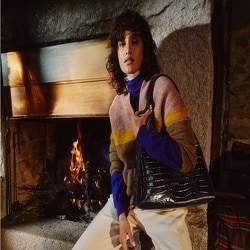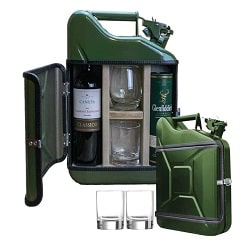The pandemic has juiced demand for automated checkout systems, but the technology still has to prove itself over the long term.
Even as other food retailers have embraced self-checkout stations as a way to reduce front-end bottlenecks, New York grocer George Zoitas has turned them away.
While Zoitas, who is CEO of Westside Market, a chain of seven grocery stores in Manhattan, takes pride in his efforts to use technology to run his business, asking people to interact with machines that were helpful but also very temperamental was a nonstarter. So in 2019, the year after he decided to try self-checkout technology, Zoitas parted ways with it.
“We didn’t like the self-checkouts whatsoever. We felt that they weren’t efficient in controlling any type of shrinkage associated with them,” Zoitas said. “And it’s not per se that people intentionally tried to steal from them. It’s just they would weigh the item, and there would be frustration. You don’t know if it scanned or if it didn’t. It created a lot of heartache versus efficiency on time and execution and getting people out.”
In place of the self-checkout system, Zoitas has installed a cashierless-payment system in one of his stores that lets customers use their smartphones to scan and pay for items. Behind the scenes, location-tracking technology charts people’s movements and records where they are when selecting merchandise within a few inches, giving him insight into shopping behavior similar to what online shopping systems can provide.
Early customer acceptance of the self-scanning service has been positive, and Westside Market is preparing to deploy it at its other stores within the coming weeks, Zoitas said.
Westside Market’s system is part of a breed of technology that backers say is ready to make a big impact on the way people shop in retail locations by eliminating lines, reducing touch points and otherwise speeding up the shopping experience. While those benefits have guided the technology’s development from the start, the safety concerns posed by the pandemic have hastened its development, industry officials said.
An enduring benefit of next-generation checkout systems may be their ability to provide data about customers’ in-store habits. In addition to eliminating checkout friction, Westside Market’s system enables retailers to deliver personalized coupons or other advertisements to a customer’s smartphone that are triggered as they move around the store, said Will Hogben, CEO of FutureProof Retail, which worked with SIRL, a provider of location-tracking technology, to build Westside Market’s system.
“We’re really taking capabilities that were developed in the e-commerce space and now leveraging them back into the physical store,” said Hogben, whose company also worked with SIRL to develop a cashierless checkout system for New York’s Fairway Market. “The same recommendations engine that a retailer might be running on their website is now also able to [handle] sales in the store.”

A quest to eliminate checkout lines
While checkout innovations can be exciting for shoppers, the reality is that they’re expensive to implement and don’t always produce a return for grocers. Mobile checkout programs had received a lukewarm reception before the pandemic, with Walmart discontinuing its Scan & Go program in 2018 due to low customer interest. So although the coronavirus has given technology companies a boost, the technology they have developed still has to prove valuable in a post-pandemic world.
Westside Market’s system is among several answers to the autonomous checkout technology Amazon operates at its Go and Go Grocery stores that are beginning to hit the market. This year, Amazon further raised the stakes by launching its camera-equipped shopping cart known as the Dash Cart, which is an option for shoppers at the company’s growing number of Amazon Fresh grocery stores.
“The fact that Amazon has now entered [grocery] with tech in mind is going to force retailers to rethink their strategy,” said Shariq Siddiqui, a former Amazon product manager who now runs Veeve, a startup that developed a smart shopping cart to compete with the e-commerce giant’s Dash Cart.
When it come to checkout, retailers have a range of options that are increasingly popular with pandemic-stressed shoppers, including mobile wallets and mobile scan-and-pay systems. Tech companies are also focusing on developing systems that, like Amazon’s, permit customers to simply take items off a retailer’s shelves and walk out. After years of development, this technology, which identifies items using a technique known as computer vision, has recently started to show up in retail locations and is poised eventually to make its way into large-scale grocery stores.
“We’re just now at the point where we’ve got a product that’s refined enough … that is seamless to deploy and cheap enough to deploy that it doesn’t really change how [retailers are] running their operations,” said Jordan Fisher, CEO of Standard, which works with retailers to install computer vision-based checkout technology in existing stores.
Chartwells Higher Ed, a division of international foodservice company Compass Group that runs dining and retail facilities on college campuses, is one of Standard’s first customers. In October, Chartwells began entirely cashierless operations at a convenience store it operates at the University of Houston using technology supplied by Standard.
In addition to Chartwells, Standard runs its own automated convenience store near its headquarters in San Francisco. The company, formerly known as Standard Cognition, is also piloting its technology through a partnership with Alimentation Couche-Tard of Canada, operator of the Circle K convenience store chain.
The high levels of foot traffic the University of Houston store typically sees as students rush through is a central reason why Chartwells decided to try Standard’s technology, according to David Riddle, vice president of operations for the company and district manager for University of Houston System Dining.
“Class breaks are a little bit like a sporting event at half-time,” said Riddle. “Everybody wants to eat at the same time, and they’ve all got 15 to 30 minutes to do it. That’s where this completely cashierless, grab-what-you-want technology will help us drive a better guest experience.”
Chartwells has essentially turned the 53,000-student University of Houston campus into a testing ground for retail technology. The company deployed a fleet of 30 delivery robots from Starship Technologies to transport food orders on the campus in 2019, and in August installed a salad-making robot.
Riddle said getting customers through stores faster has long been on his mind, adding that the technology has arrived just in time to reduce queuing as the pandemic has put a spotlight on the dreaded checkout line. In 2021, Chartwells plans to add Standard’s technology to a 3,000-square-foot store on the campus.
“The need has been there, and the idea has been there for a long time,” Riddle said. “We were just really patiently waiting for the technology to arrive, and we jumped on it.”
Remaking the checkout experience with computer vision
Among Standard’s rivals in the nascent market for systems that use cameras to identify products as customers pick them up is Grabango, which has also made headway in bringing its technology to market this year. In September, the company launched its first commercial deployment at a Giant Eagle Get+Go convenience store in the Pittsburgh area retrofitted with its system. On Nov. 23, Grabango added the ability for Giant Eagle customers to purchase beer at the store using its system, according to a spokesperson for the technology company.
“We are now no longer a proof-of-concept experience. We are a commercially viable product that’s ready to be expanded across retailers and across geographies,” said Andy Radlow, Grabango’s chief business officer.

“There’s a sense of urgency that’s been magnified by the pandemic that it’s important to eliminate lines for obvious safety reasons. It’s a real bonus when people don’t have to have a cashier touch every one of their food items after that cashier has met with hundreds of people. So there’s more pressure than ever to get this out there.”
Andy Radlow
Chief Business Officer, Grabango
Consumer response to Grabango’s first commercial deployment, at a Giant Eagle Get+Go convenience store in the Pittsburgh area, has exceeded expectations. Three-quarters of people who have tried the service have used it at least one more time within 30 days, and of that group, two-thirds have used it at least five times, Radlow said.
While Grabango’s technology can be used to record details about people’s shopping patterns and deliver targeted promotions, the company’s main focus is on providing retailers with the ability to make shopping more convenient for customers, Radlow said.
“There’s a sense of urgency that’s been magnified by the pandemic that it’s important to eliminate lines for obvious safety reasons,” said Radlow. “It’s a real bonus when people don’t have to have a cashier touch every one of their food items after that cashier has met with hundreds of people. So there’s more pressure than ever to get this out there.”
Grabango is working with Giant Eagle to deploy the technology at additional locations, but Radlow declined to offer a timeline or other details.
Radlow said that Grabango’s technology can be scaled to operate in a full-scale grocery store, noting that the company is currently testing its system in a 40,000-square-foot supermarket in the United States operated by a grocer he described as a “major regional player” but declined to identify. “We are working through all the user cases to bring it into commercial service,” said Radlow.
Radlow acknowledged that people have been skeptical that Grabango’s technology can be used in retail environments larger than a convenience store. “There’s been companies that say, ‘Excuse me, you can’t operate in anything larger than a small-format store, right?’ And that’s not true … we’ve always been designed for scale,” he said.
Grabango’s ongoing efforts to bring its technology to standard-size supermarkets set it apart from Standard, which is currently focused on the convenience store sector.
“Our current go-to market is very focused on convenience because of the shopper network we’re trying to build,” said Fisher. “We’re particularly interested in urban settings, at least for this initial wave of deployments.”
Standard is, however, planning to expand into the grocery-store space at a later point, Fisher said. “We’re certainly having the conversations with groceries, because that will come next for us in terms of the verticals that we’re tackling. But in terms of how do we get this into shoppers hands as quickly as possible, for us it’s about convenience today, grocery tomorrow.”

Detecting items all at once
Other companies have developed next-generation payment terminals that can identify multiple items at once when customers place them on a platform. These devices don’t rely on cameras mounted around a store, making them particularly easy to install in a store, said Jack Hogan, director of strategic partnerships for Mashgin, which provides self-service, computer vision-equipped checkout terminals for use in places like airports, sports arenas and cafeterias.
Hogan said his company’s decision not to require people to install a smartphone app to use its systems, as other system do, is a simple yet important differentiator. In November, the company recorded the ten-millionth transaction recorded by its equipment, according to Hogan.
“We think that we can take a big chunk of the market in this specific space, because it’s not only backward-compatible for our customers, it’s backward-compatible for the end user,” said Hogan. “They understand the concept of checkout. They understand the process of checkout. They just wish that there wasn’t a person breathing on them or want the ability to go at their own pace.”
Smart-cart maker Caper also sells standalone checkout unit that use computer vision to identify products.

Gary Budd, director of strategic planning and execution for Giant Food, which has long offered customers handheld barcode-scanning devices that let them skip cashier lanes, said the pandemic has stepped up customer interest in the technology, which it calls Scan It. Giant offers the service in about 120 of its 164 stores and plans to bring it to additional stores, Budd said, adding that the retailer has recently improved the in-store connectivity that allows the units to function.
The mid-Atlantic grocer is examining options to step up its cashierless technology, but has no immediate plans to move beyond Scan It, which also allows shoppers to use their phones to identify items, Budd said.
“It wasn’t a service that a lot of people used. We provided it as a convenience. But now, there’s a lot more usage because of this COVID situation,” Budd said. “My hope is that over time, similar to what we have seen with pickup, more and more people will start to steer toward the Scan It process.”








